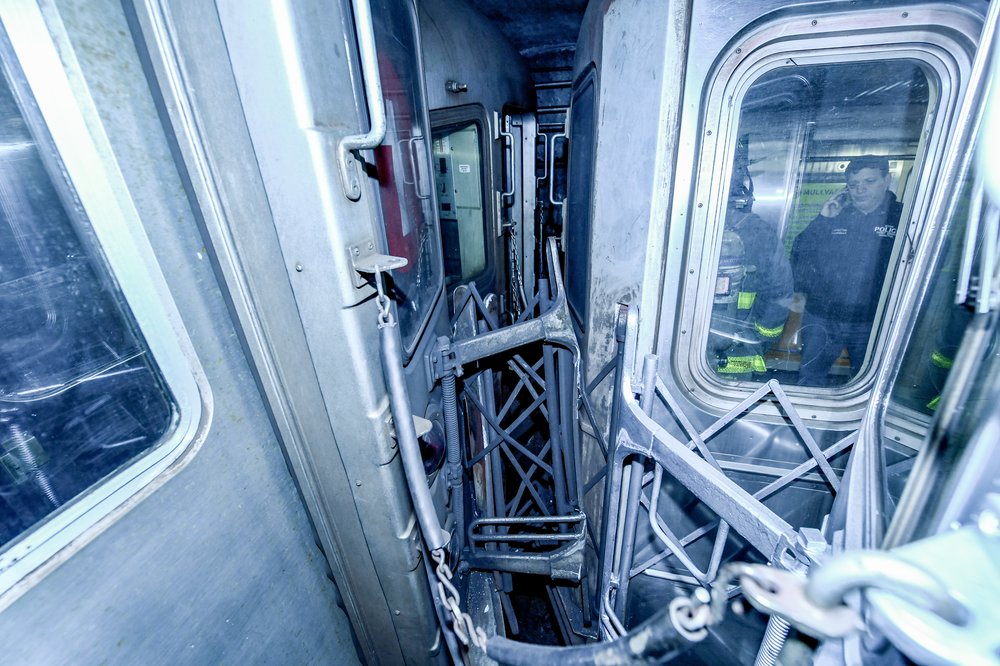Radio problem may have caused Upper West Side subway crash, feds say
Jan. 25, 2024, 4:27 p.m.
A train supervisor operating a 1 train from the middle car lost radio contact with a colleague shortly before the crash, the National Transportation Safety Board said on Thursday.

Problems with MTA radios may have contributed to the slow-moving crash of two subway trains on the Upper West Side earlier this month, federal investigators wrote in a preliminary report on Thursday.
The Jan. 4 derailment, which injured at least 24 people and sparked days of delays, happened when a disabled 1 train without passengers on board rolled into another 1 train full of riders just north of West 96th Street.
The disabled train had been taken out of service after an “unruly passenger” pulled its emergency brakes, the National Transportation Safety Board wrote in its report. That forced a train supervisor to drive the train from the middle car, while another operator stood in the front car providing directions over the radio.
The operator in front “said he lost radio communications with the transit system supervisor near 96th Street Station,” according to the report. Shortly after, “the train passed by a signal requiring a stop at the end of the 96th Street Station platform, and the collision occurred."
The NTSB said its investigation is ongoing. Board Chair Jennifer Homendy said at a press conference shortly after the crash that the watchdog agency would “look at the entire [subway] system, including how it is managed and supervised.”
She noted that a subway track worker had been dragged and killed by a train near the 34th Street-Herald Square station on Nov. 29.
NYC Transit President Richard Davey said during a news conference on Thursday that testing after the accident found no problem with the radios used by the crew. But he said he has no way to determine if they lost signal in the tunnel before the derailment — or even if the crews were using the same radio channel.
Davey added that the MTA was reviewing its safety protocols going forward.
“We’re going to look at not only the conduct of the individuals to see if there are improvements but also to see if there are processes, procedures — better radio procedures, for example — that we can employ in the future,” he said.
Davey emphasized that it’s not uncommon for a train to be driven from the middle car while another worker gives directions over the radio. He estimated it occurs in the subway system 10 to 12 times a week.
Less than a week after the Upper West Side derailment, an F train jumped the tracks in Coney Island, leaving it just feet away from the edge of an elevated structure.
The Daily News reported bolts were missing from the underside of one of the train's cars, which Davey confirmed Thursday. Davey also said a part of the track was off by roughly one-eighth of an inch.
The combination of the missing bolts and the askew rail caused the train to derail, he said.
Davey assured New Yorkers the “subway is safe,” noting that crews inspected 59,968 bolts across 1,800 subway cars over the last two weeks and found only three loose bolts.
Davey acknowledged his team had identified 103 areas of subway tracks that were similarly askew and fixed 81 of them so far. He said crews would fix the remainder by the end of February.
Anatomy of a New York City subway crash: Dozens of decisions and a derailment MTA pauses track work after worker killed by subway train Train derails in Brooklyn, marking second NYC subway derailment of 2024